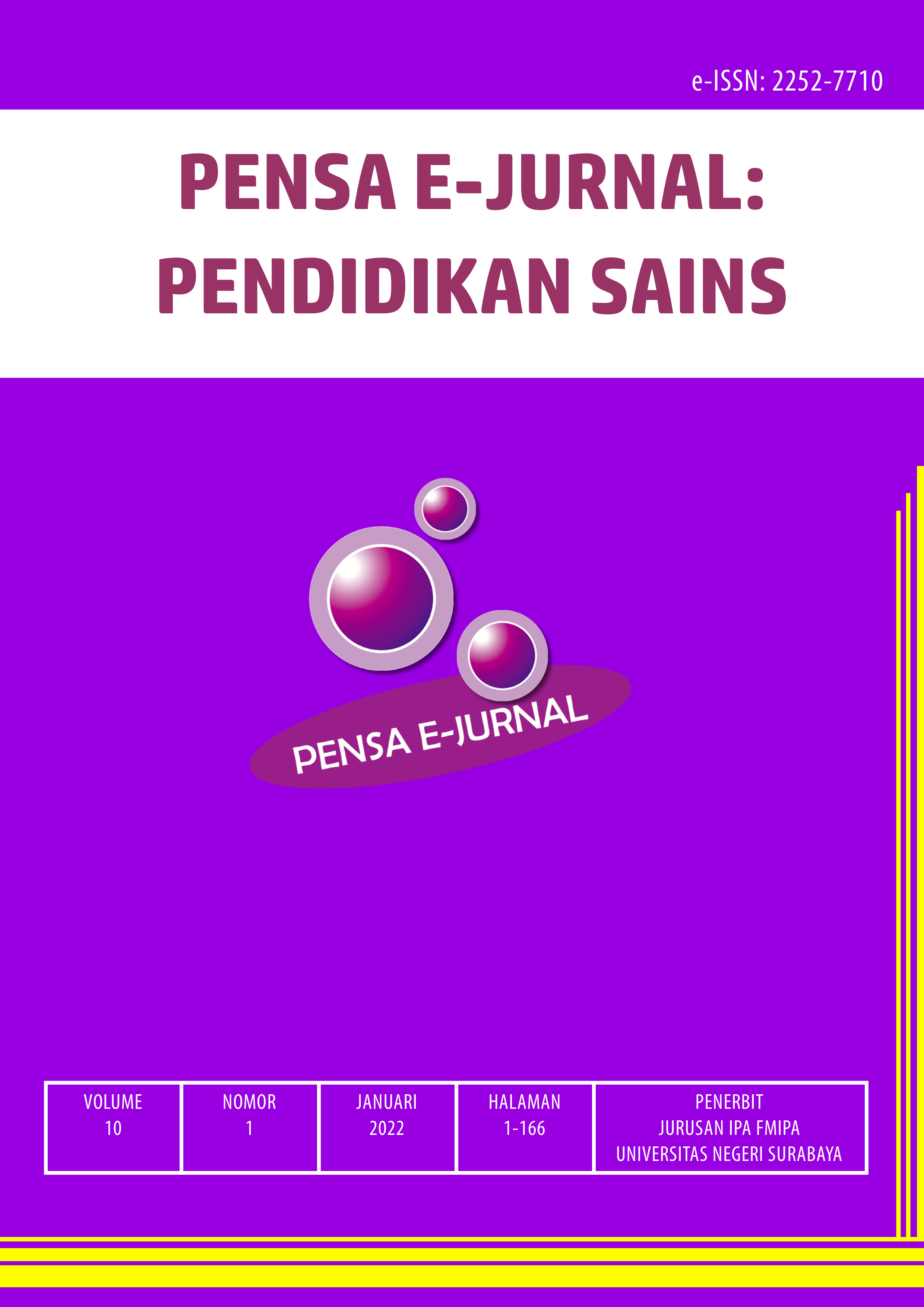PERSEPSI PELAJAR TERHADAP VIDEO CONFERENCE SAAT PANDEMI COVID-19
STUDI EKSPLORASI
DOI:
https://doi.org/10.26740/pensa.v10i1.41860Keywords:
interests, pedagogy, perception, video conferenceDownloads
Download data is not yet available.
Downloads
Published
2022-01-08
How to Cite
Artanti, A. H., & Subekti, H. (2022). PERSEPSI PELAJAR TERHADAP VIDEO CONFERENCE SAAT PANDEMI COVID-19: STUDI EKSPLORASI. PENSA E-JURNAL: PENDIDIKAN SAINS, 10(1), 44–52. https://doi.org/10.26740/pensa.v10i1.41860
Issue
Section
Articles
 Abstract views: 494
,
Abstract views: 494
, PDF Downloads: 300
PDF Downloads: 300

















